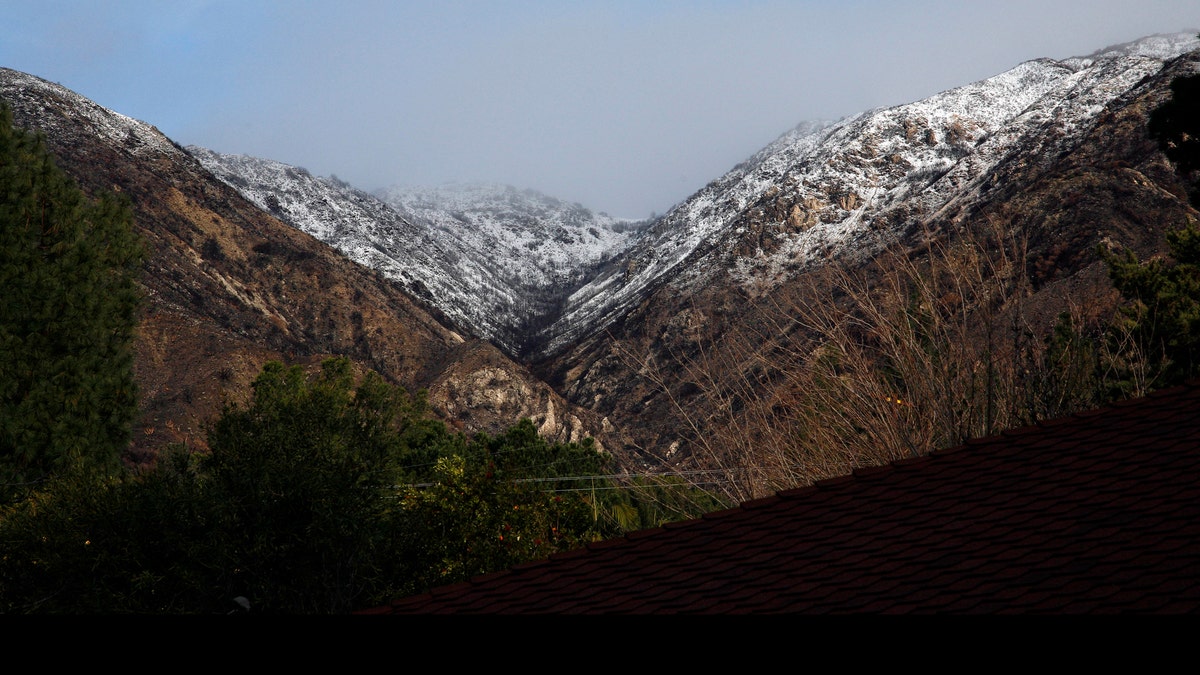
San Gabriel Mountains above Ocean View Boulevard in La Canada Flintridge, California. (AP2010)
President Obama designated the Organ Mountains-Desert Peaks in New Mexico as our nation’s newest national monument earlier this year, a significant step forward to ensuring Latino heritage and culture is woven into the broader narrative of American history. In fact, it’s the third monument the President has designated to protect places and events of significance to the Latino community, following the creation of the César E. Chávez and the Río Grande del Norte National Monuments. There is strong support within the Latino community to permanently protect these special places.
Protecting the beauty and accessibility of the San Gabriel Mountains will extend far beyond the public land itself, creating new recreational opportunities, and improving the quality of life for residents; it will also boost the local economy.
Although President Obama has helped ensure that future generations of Latinos will have more opportunities to connect with America’s natural and cultural heritage, the job is far from finished. We are thrilled the President has promised more monument designations in the future as there remains many places worthy of protection across the country, none more urgent than the San Gabriel Mountains.
Rising high above Los Angeles, the spectacular San Gabriel Mountains are the iconic landmark of the Angeles and San Bernardino National Forests. Stretching from Santa Clarita to San Bernardino, the San Gabriel Mountains are the recreational “backyard” for more than 17 million Southern Californians, many of whom are Latino. In fact, Latinos comprise nearly half (48.3 percent) of Los Angeles County’s population.
Whether it’s hiking Mount Baldy or fishing in the Big Santa Anita Creek, the San Gabriel Mountains offers something for everyone. Over three million annual visitors picnic, camp, horseback ride and otherwise enjoy this majestic mountain range. Additionally, it’s an irreplaceable natural resource for the foothills communities, providing clean air, drinking water and outdoor recreational opportunities.
Protecting the beauty and accessibility of the San Gabriel Mountains will extend far beyond the public land itself, creating new recreational opportunities, and improving the quality of life for residents; it will also boost the local economy. Each year, outdoor recreation in California generates $85.4 billion in spending, supporting 732,000 jobs, according to the Outdoor Industry Association. Many of these jobs are local and Los Angeles County depends on them.
Furthermore, at a time when diabetes and obesity impact more and more Latino families, the permanent protection of the San Gabriel Mountains can play an important role in obesity prevention and improving public health. The percentage of adults in Los Angeles County with diabetes increased from 6.6 percent to 9.9 percent from 1997 to 2011, according to a report by the Los Angeles County Department of Public Health.
The same report found that diabetes prevalence was highest among Latinos. Lack of recreational opportunities severely impacts communities struggling with obesity and diabetes. Access to parks, trails, open spaces and recreational facilities can promote an active lifestyle and address these health disparities.
Therefore, it’s a move that’s broadly supported by Latinos, unlike recent efforts in Congress to undermine the President’s authority under the Antiquities Act to protect special places. A research brief by Latino Decisions and Hispanic Access Foundation found that Latinos overwhelmingly support greater environmental protections, such as preserving parks and public lands, so much so that conservation issues could influence voting decisions in the mid-term elections.
Closer to home, a poll released by San Gabriel Mountains Forever found four-in-five Los Angeles County voters in support of protecting the San Gabriel Mountains and rivers – with almost universal support in 88 percent among Latino voters.
At the Organ Mountains-Desert Peaks executive order signing, President Obama said, “I’m searching for more opportunities to preserve federal lands where communities are speaking up.” Residents, local business owners, faith and community leaders, health and environmental organizations and many others are speaking up. I hope the President hears our call and acts to permanently protect the San Gabriel Mountains.
